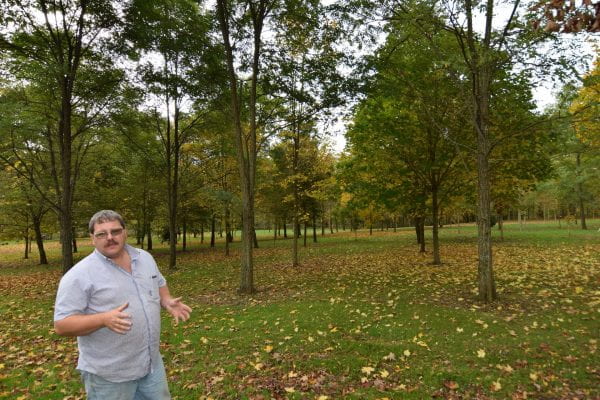A brief introduction to this relatively new feature – Monthly Maple Review, which is now in its third month. Once a month, we review a research article to spotlight key findings, investigate curiosities, and uncover important implications for Ohio’s maple producers. Please comment below if you have thoughts, ideas, insights, or questions. If you stumble on to a new maple article and want to see it highlighted in a Monthly Maple Review, please reach out to me via email – karns.36@osu.edu.
After a more technical and heavy academic discussion of factors influencing bud break in sugar maples during our March review, I decided to explore a peer-reviewed article that draws from a much different perspective. Biosemiotics is the study of signs and meaning in living organisms and systems (as defined by Springer Publishing – Springer has curated a quarterly journal dedicated to this topic for 15 years). Biosemiotics, put more simply, asserts that life is based on signs and codes – a statement that straddles the line between science and philosophy. “Food, Care and Sugar Maple Stand” by Jonathan Hope was published in 2021 in the journal Biosemiotics. This article does not present any experimental research or new study, but rather challenges us to think about maple trees and our relationship with maple trees in a different light.

When we anthropomorphize, we assign human-like attributes to non-human objects or organisms. For instance, a talking candlestick or feather duster imparted with human emotions in the movie Beauty and the Beast is a great example of anthropomorphizing. In recent years, popular books such as The Hidden Life of Trees have popularized the idea that trees may have the ability to communicate and respond to one another through local and more extended networks. This progressive notion certainly challenges a more narrow view of trees that relegates them simply to living cells constituting trunks, roots, leaves, and an annual cycle of growth. Sugarmakers certainly hold trees in higher esteem than just such a rudimentary and crude description, it is after all maple trees that we put on a pedestal to admire, cherish, and prize them! But trees communicating? In the more human sense, that might still be a stretch for many of us.
The maple producer who understands the multitude and complexity of factors that impact a maple tree’s growth, health, vigor, and day-to-day performance through a sugaring season is keenly aware of just how responsive maple trees are to stimulus. Jonathan Hope – the article’s paper – proposes that this keen ability to respond to changing signals and environments is a testament to the mindfulness of maples. Enjoy the following passage.
“Running a sugar shack requires that producers learn how the biological engine of the trees works, or more precisely, that they understand the behavior of the trees…Understanding how maples groves function also requires that the sugarmaker learns, or becomes familiar with, what [Aldo] Leopold calls the ‘language’ of wildlife – through ‘semiosis’…this language could refer to many types of sign relations. In other words, learning the language of trees depends on one’s readiness to admit that meaningful things happen to/in them.”
When we view trees as having and responding to a unique set of signals and languages, we also begin realizing that trees are connected to the soil, are dependent on and connected to the subsurface and surface water cycles, are potentially harmed and injured by non-native pests, are life providers and habitat for many native organisms, are intimately linked not just to the seasons but also to minute changes in weather and climatic conditions, … What are those intimate links, those connection points – of course, these are the essence of ecology. Everything is linked to everything else. Are humans interwoven and part of that web and outside and distant from that web of connections? I’ll let you answer that.
If we anthropomorphize and grant trees the ability to communicate, to respond to external stimuli, and to profoundly influence organisms in their sphere of influence, then perhaps it’s not a stretch to take the following quote serious. “Humans can take care of each other, of other animals, of plants and natural environments; and inversely environments, plants and animals take care of themselves, and sometimes, take care of humans.” I don’t believe this way of thinking is a big stretch for many maple producers. We absolutely love our trees, and we understand that we are profoundly and deep rooted to our maple woods.
Here’s one final line from the article – certainly a far departure from a technical and verbose experimental study.
“So many relations interlace in a can of maple syrup…Maple sugar producers intervene on the forests and tinker with their semiosis, harnessing, and participating with the ‘energy pathways’…of food and care. Eating and caring have always been marked by commensality. Maple sugaring shows once more that this togetherness extends far beyond the limits of the human.”





